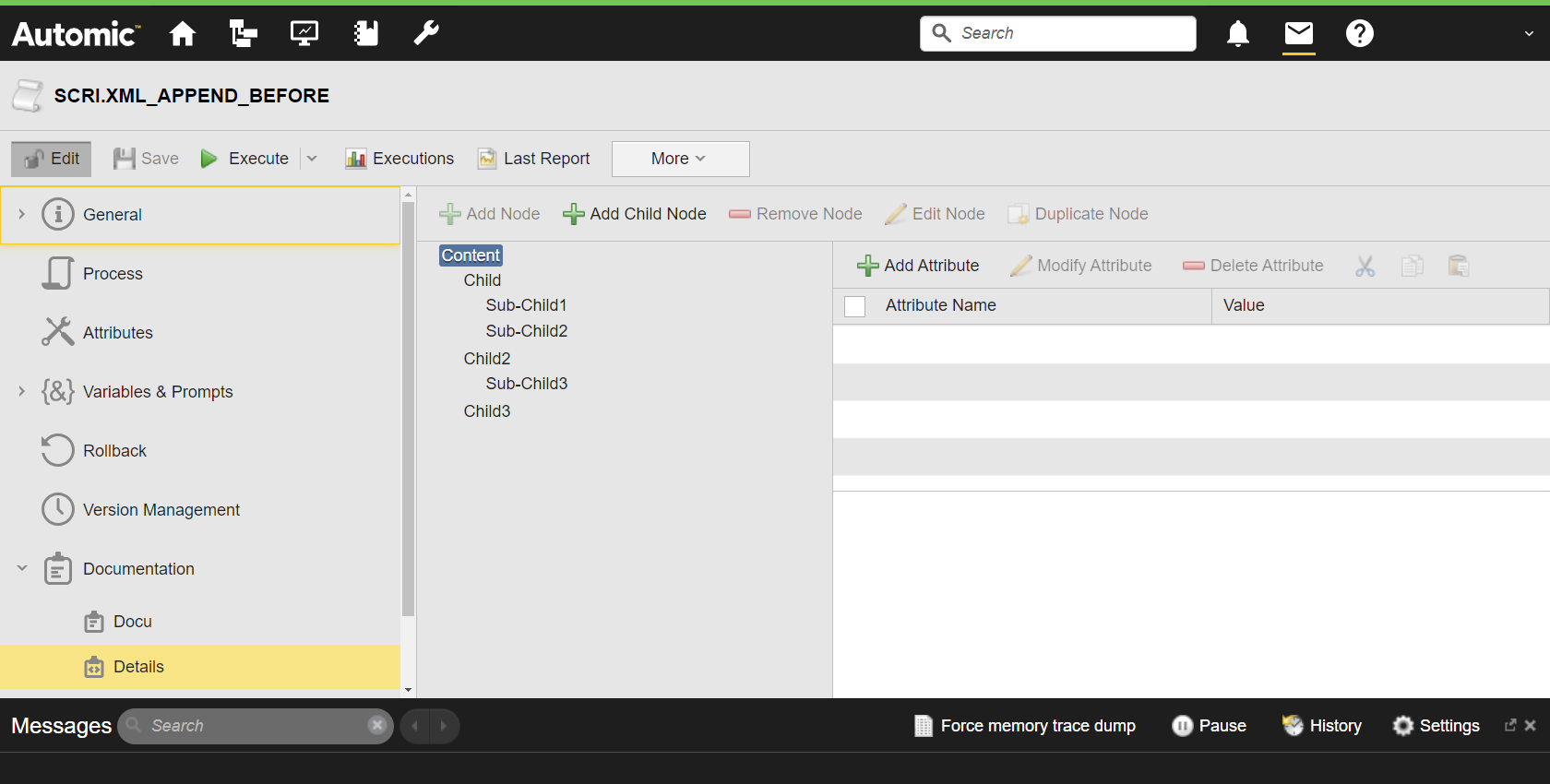XML_APPEND_BEFORE
Use the XML_APPEND_BEFORE script function to insert a specific XML element before another element within the open XML document, thereby moving this element into the XML structure. The moved element is then located on the same level as the other element, the reference element.
Important!
- The XML structure is modified in the memory only. You do not see the changes of XML_APPEND_BEFORE on the structured documentation page.
- Do not move the element to the top level. The reference element cannot be located on the top level.
Tip: Use the XML_OPEN script function to open the XML document. For more information, see XML_OPEN.
Syntax
XML_APPEND_BEFORE (Element, Reference element)
Script Function and Parameters
-
XML_APPEND_BEFORE
Moves an XML element before another element -
Element
Reference to the element to be moved
Format: script literal or script variable -
Reference element
Reference to the element in front of which you want to insert the Element
Return Code
This script function returns the reference to the inserted element.
Example
The following example opens the @Details structured documentation page of the own object as an XML document. The script moves the original order of the existing elements. The 'Sub-Child1' element within 'Child' is moved before the 'Sub-Child3' element in 'Child2'.
:SET &XMLDOCU#=XML_OPEN(DOCU,,"@Details")
:IF &XMLDOCU# <> ""
:SET &ELEMENT1# = XML_SELECT_NODE(&XMLDOCU#,"Child/Sub-Child1")
:SET &ELEMENT2# = XML_SELECT_NODE(&XMLDOCU#,"Child2/Sub-Child3")
:SET &NEW# = XML_APPEND_BEFORE(&ELEMENT1#,&ELEMENT2#)
:SET &ELEMENT# = XML_SELECT_NODE(&XMLDOCU#,"Child2")
:SET &ELEMENT# = XML_GET_FIRST_CHILD(&ELEMENT#)
:WHILE &ELEMENT# <> ""
: SET &NAME# = XML_GET_NODE_NAME(&ELEMENT#)
: P 'Element: &NAME#'
: SET &ELEMENT# = XML_GET_NEXTSIBLING(&ELEMENT#)
:ENDWHILE
:ENDIF
:XML_CLOSE &XMLDOCU#
The activation report shows all elements located within 'Child2':
See also:

